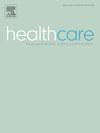The national ambulatory medical care survey (NAMCS) at fifty: Past and future
IF 2.1
4区 医学
Q3 HEALTH POLICY & SERVICES
Healthcare-The Journal of Delivery Science and Innovation
Pub Date : 2024-11-11
DOI:10.1016/j.hjdsi.2024.100754
引用次数: 0
Abstract
Introduction
NAMCS, sponsored by the Centers for Disease Control and Prevention, is an annual nationally representative sample survey of visits to non-federal office-based physicians, excluding anesthesiologists, radiologists, and pathologists. NAMCS has collected physician-reported ambulatory care encounter-specific content over five decades. We assessed trends in the use of the data by the health services research community, response rates, and questionnaire changes.
Methods
We extracted all peer-reviewed journal articles using NAMCS data published between 1973 and 2020 and categorized publications into high- and low-impact groups, with high impact considered as the top 25 % of journals. We then examined the annual number of journal publications using NAMCS, data according to the year collected, by impact score groups for 50 years. We compared response rates and the information requested by NAMCS questionnaires from 1973 to the present.
Results
There has been a significant decline in the overall use of NAMCS data by the non-federal health services research community for publication in both high and lower-impact journals. Data used for high impact publications peaked in 1998, at 87, remained high at 58 in 2008 but then sharply declined. Concurrently, there was a substantial decline in NAMCS survey response rates (highest: 80.5 % in 1975 vs. lowest: 28.8 % in 2015). These changes came in the context of increasing questionnaire complexity.
Conclusion
Over the last two decades, annual publication rates citing NAMCS data have declined, coincident with lower response rates and more detailed questionnaires. Nationally representative encounter-specific data verified by the clinician of record will likely have renewed value for those who develop, implement, and assess healthcare policy if response rates improve, and questionnaire review and finalization are streamlined. Though multispecialty data offer unique opportunities for comparisons, sampling a subset of clinicians, such as those providing primary care, would complement national efforts to improve access to continuous comprehensive care.
全国流动医疗护理调查(NAMCS)五十周年:过去与未来。
简介:NAMCS 由美国疾病控制和预防中心发起,每年对非联邦办公室医生(不包括麻醉师、放射科医生和病理学家)的就诊情况进行一次具有全国代表性的抽样调查。五十年来,NAMCS 一直在收集医生报告的非住院医疗就诊特定内容。我们评估了医疗服务研究界使用该数据的趋势、回复率和问卷变化:我们提取了 1973 年至 2020 年间发表的所有使用 NAMCS 数据的同行评审期刊论文,并将出版物分为高影响力组和低影响力组,其中高影响力组为排名前 25% 的期刊。然后,我们使用 NAMCS 数据,根据收集的年份,按 50 年的影响分值组别,检查了每年的期刊论文数量。我们比较了1973年至今的回复率和NAMCS问卷所要求的信息:结果:非联邦卫生服务研究界在高影响力和低影响力期刊上发表的NAMCS数据的总体使用率明显下降。高影响力刊物使用的数据在 1998 年达到顶峰,为 87 篇,2008 年仍高达 58 篇,但随后急剧下降。与此同时,NAMCS 调查的回复率也大幅下降(最高:1975 年为 80.5%,最低:2015 年为 28.8%)。这些变化是在问卷日益复杂的背景下出现的:在过去的二十年中,引用 NAMCS 数据的年度发表率有所下降,这与较低的回复率和更详细的问卷调查相吻合。如果回复率有所提高,问卷审核和定稿工作得以简化,那么由临床记录医生验证的具有全国代表性的特定病例数据对于那些制定、实施和评估医疗保健政策的人来说可能会有新的价值。虽然多专科数据为比较提供了独特的机会,但对临床医生的子集(如提供初级医疗服务的医生)进行抽样调查,将对改善持续全面医疗服务的全国性工作起到补充作用。
本文章由计算机程序翻译,如有差异,请以英文原文为准。
求助全文
约1分钟内获得全文
求助全文
来源期刊

Healthcare-The Journal of Delivery Science and Innovation
HEALTH POLICY & SERVICES-
CiteScore
4.90
自引率
0.00%
发文量
37
期刊介绍:
HealthCare: The Journal of Delivery Science and Innovation is a quarterly journal. The journal promotes cutting edge research on innovation in healthcare delivery, including improvements in systems, processes, management, and applied information technology.
The journal welcomes submissions of original research articles, case studies capturing "policy to practice" or "implementation of best practices", commentaries, and critical reviews of relevant novel programs and products. The scope of the journal includes topics directly related to delivering healthcare, such as:
● Care redesign
● Applied health IT
● Payment innovation
● Managerial innovation
● Quality improvement (QI) research
● New training and education models
● Comparative delivery innovation
 求助内容:
求助内容: 应助结果提醒方式:
应助结果提醒方式:


